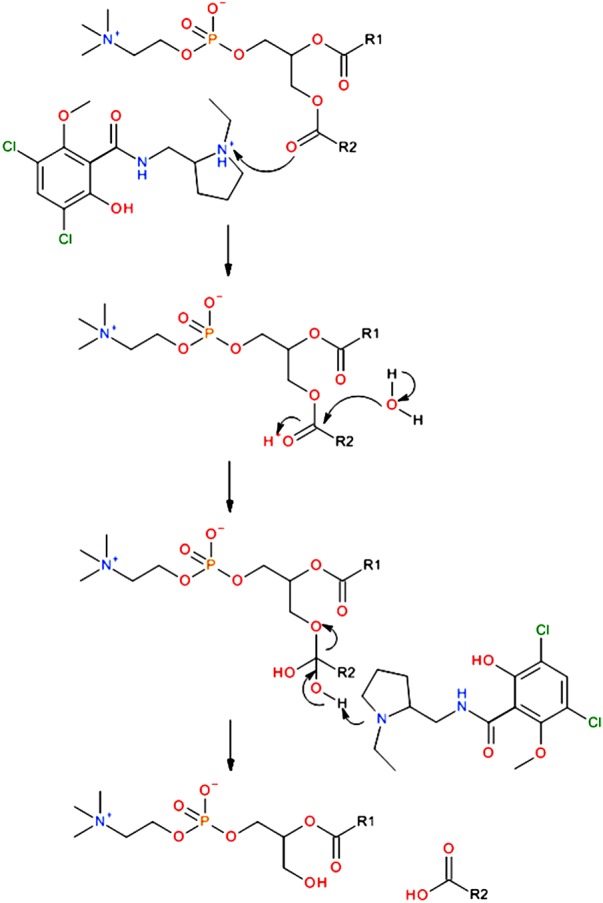Figure 1.

The mechanism of lipid hydrolysis catalysed by the presence of an amphiphilic species acting as a phase transfer agent, illustrated here with a phosphatidylcholine species and the CAD raclopride, where R1 and R2 are alkyl chains. As the reaction progresses, the diacyl species which promote the formation of lipid bilayers are replaced by highly curved lysolipids and fatty acids which prefer to form curved interfaces, leading to dramatic perturbations within the membrane. (Online version in colour.)
